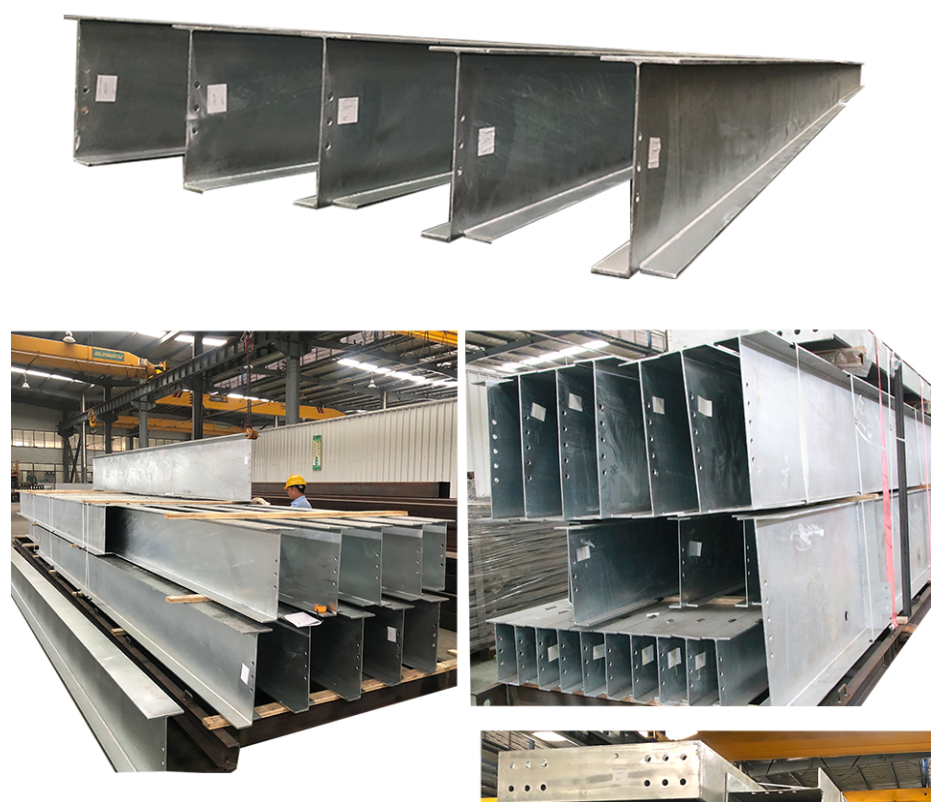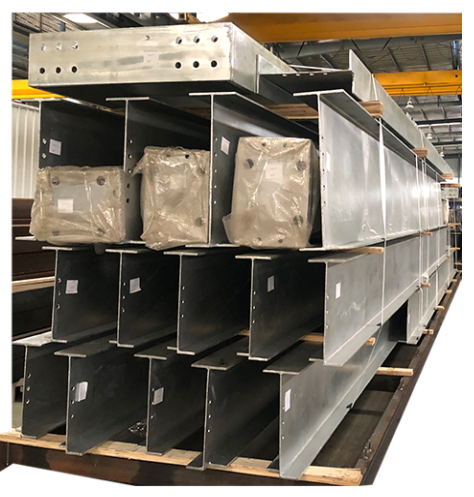-
 Call Now ! 0086-13390692151
Call Now ! 0086-13390692151 -
 Email Now sale@kfqizhongji.com
Email Now sale@kfqizhongji.com



H-beam steel is divided into submerged arc welded H-beam steel and high-frequency welded H-beam steel.
Product definition
It is a better economical cross-section steel optimized and developed from I-shaped steel. Its cross-section is the same as the English letter "H" and is named after it. It is divided into submerged arc welded H-shaped steel and high-frequency welded H-shaped steel. Since all parts of H-shaped steel are arranged at right angles, H-shaped steel has the advantages of strong bending resistance in all directions, simple construction, cost saving and light structural weight, and has been widely used.

Production Process
The process of submerged arc welding H-shaped steel is: steel plate - automatic striping - assembly - automatic submerged arc welding - flaw detection - flange correction - web correction - end face processing - sand blasting and rust removal - painting. The fully automatic submerged arc welding production line's cutting, assembly and welding are all controlled by microcomputers to ensure that the dimensional accuracy of the H-shaped steel produced and the quality of the welds meet national standards.
Features
The inner and outer sides of the flanges of H-shaped steel are parallel or close to parallel, and the flange ends are at right angles, hence the name parallel flange I-beam. The web thickness of H-shaped steel is smaller than that of ordinary I-beams with the same web height, and the flange width is larger than that of ordinary I-beams with the same web height, so it is also called wide-edge I-beam. Determined by its shape, the section modulus, moment of inertia and corresponding strength of H-shaped steel are significantly better than ordinary I-beams of the same unit weight. Used in metal structures with different requirements, it shows its superior performance whether it bears bending moment, pressure load, or eccentric load. It can greatly increase the load-bearing capacity compared with ordinary I-beams and save 10% to 40% of metal. H-shaped steel has wide flanges, thin webs, multiple specifications, and flexible use. It can save 15% to 20% of metal when used in various truss structures. Because the inner and outer sides of the flange are parallel and the edge ends are at right angles, it is easy to assemble and combine into various components, thus saving about 25% of the welding and riveting work, which can greatly speed up the construction speed of the project and shorten the construction period.

Customized on demand, complete categories to meet the needs of various fields
Mainly used for: various civil and industrial building structures; various large-span industrial plants and modern high-rise buildings, especially industrial plants in areas with frequent seismic activity and high-temperature working conditions; requiring large load-bearing capacity, good cross-sectional stability, and span Large and large bridges; heavy equipment; highways; ship frames; mine support; foundation treatment and dam engineering; various machine components.